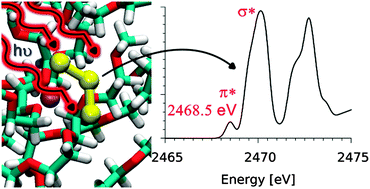X-ray spectroscopy as a probe for lithium polysulfide radicals
Abstract
The discharge mechanism in lithium sulfur batteries is still unknown and has been purported to involve significant concentrations of polysulfide radicals. Methods capable of quantifying these species in solution are therefore of paramount importance to revealing electrochemical pathways. Here we utilize DFT based X-ray Absorption Spectroscopy (XAS) simulations at the sulfur K-edge to obtain the spectra of polysulfide molecules in neutral, radical (−1) and dianionic (−2) charge states. Our calculations indicate that, contrary to recent propositions, the observed low energy, pre-edge feature in S K-edge XAS near 2470 eV is not exclusively due to radical species, but rather arises predominantly from core-excitations of terminal atoms, at the ends of linear polysulfides, to σ* orbitals, consistent with our previous results for the dianionic species. We do however find a spectral feature unique to radicals, lying 0.5–1 eV below the established pre-edge, that arises from 1s → π* transitions of the terminal atoms. Existing measurements on polysulfides show no evidence for such transitions. We predict that detection of linear radicals in polysulfide mixtures using XAS is limited to high mole fractions (>20%), due to the relatively weak XAS intensity of this π* feature.


 Please wait while we load your content...
Please wait while we load your content...